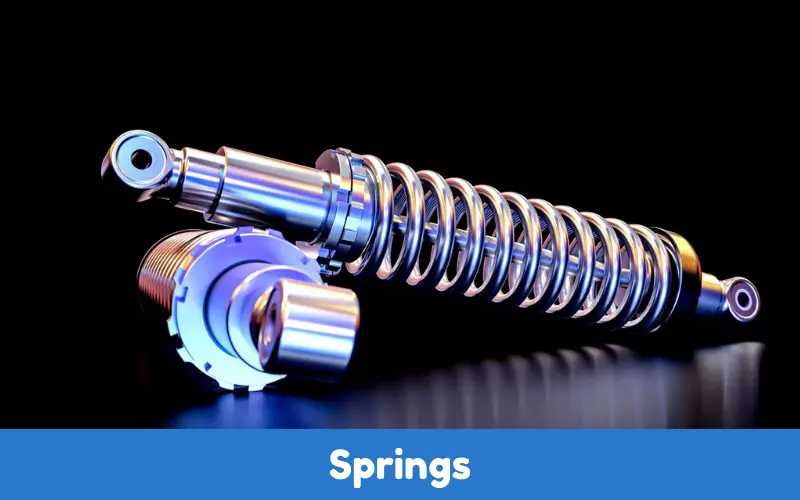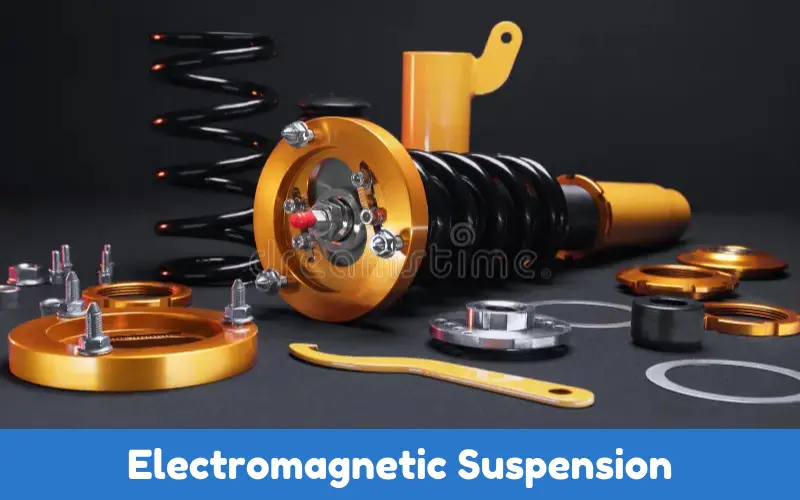When you tuck under a pothole or turn into a tight bend without a problem, it’s all due to your car’s suspension.
Many inexperienced motorists ignore the car suspension, a complex web of parts that determines your driving experience, control over your vehicle, and safety.
The content of this post is about how the suspension system on vehicles works, what they are, and why you should maintain it.
Article Summary
- What Is a Suspension System?
- Components of a Suspension System in Automobiles
- Types of Suspension
- The Evolution of Suspension Systems in Automobiles
- Importance of Suspension System Maintenance
- The Impact of Suspension on Performance And Safety
- Suspension Tuning And Upgrades
- The Future of Suspension Systems
What Is a Suspension System?
The suspension system is a general term for springs, shock absorbers, linkages, and so on that tie a car to its wheels and allow it to move relatively from one to the other.
Suspension system mostly carries the vehicle’s weight, absorbs and absorbs shock from road imperfections, and retains contact between tires and the road for traction and control.
Key Functions of a Car Suspension System
- Ride Comfort: Suspension dampens impacts and vibrations so the passenger’s ride remains comfortable.
- Handling And Stability: It keeps the tire in contact with the road, giving you a better handle when steering, accelerating, and braking.
- Vehicle Support: Suspension helps the vehicle to stay firmly loaded and at an ideal height.
- Wheel Alignment: It maintains proper wheel alignment, which is important for tire life and fuel efficiency.
Components of a Suspension System in Automobiles
The components of a car suspension system can tell you something about how the system works in general.
1. Springs
Springs form the core of any suspension. They transfer energy slowly from the bumps on the road so the car doesn’t bounce around so much.

- Coil Springs: The most popular model, which is found on a great many vehicles.
- Leaf Springs: Common on big rigs and older cars.
- Torsion Bars: Twist to generate spring-like action, used for front suspension.
- Air Springs: Air pressure to give you adjustable support (used in some sports and performance cars).
2. Shock Absorbers (Dampers)
Shock absorbers dampen unneeded spring movement, as its name implies. They convert kinetic energy into heat (heat), which goes to waste.
3. Struts
A strut is made of a spring and shock absorber. Struts are part of the car’s suspension and frame, especially in front wheel drive vehicles.
4. Anti-Sway Bars (Stabilizer Bars)
These bars link the left and right wheels for less body roll in the corners for a smoother ride.
5. Control Arms
Control arms connect the suspension to the frame or body and enable you to move in a controlled manner with the wheel in the correct orientation.
6. Bushings And Joints
These are components that pivot the suspension and dampen noise and vibrations.
Types of Suspension
Mechanisms There are generally two types of suspension systems: dependent and independent.
Dependent Suspension
In a dependent suspension, the wheels of the same axle are coupled, and a change in one side’s position influences the other.
- Solid Axle: Mainly in big rigs and rear suspensions on some cars.
- Semi-Independent Suspension: Some level of independence but still connects wheels.
Independent Suspension
With Independent suspension, both wheels roll freely to improve comfort and control.

- MacPherson Strut: A cheap and easy independent front suspension found in most cars.
- Double Wishbone: Improves control and is usually used in sports and high-end cars.
- Multi-Link Suspension: Multiple arms keep the wheel’s motion in check. It is comfortable but reliable.
The Evolution of Suspension Systems in Automobiles
Suspension in cars has developed a lot throughout the years. Old cars used primitive leaf springs, but technology has brought more sophisticated systems, such as adaptive suspensions.
Adaptive And Active Suspension Systems
Today’s vehicles could have adaptive or active suspension systems, which change in real time as you drive.
- Adaptive Suspension: Adapts damping forces via electronic sensors and actuators.
- Active Suspension: Directs the motion of the suspension, usually by hydraulic or electromagnetic mechanisms.
These systems are more luxurious in ride and handling but can be complex and more costly to repair.
Importance of Suspension System Maintenance
The maintenance of car suspension is a must for both safety and performance. Without it, the car is easier to drive, harder to stop, and gets rolled over.
Signs of Suspension Problems
- Strange Noises: Grinding or squeaking when moving on bumps might indicate deteriorated parts.
- Bad Control: Too much body roll, nose-dive at the brakes, or jerk.
- Uneven Wear on the Tires: Caused by the Wheels not fitting properly (Suspension problem).
- Out-of-the-Place Damage: Overfilled shock absorbers or ruptured springs.
Maintenance Tips
- Regular Inspections: Get your suspension checked regularly.
- Replace Worn Parts: Don’t defer replacement of worn shocks, struts, or bushings.
- Wheel Alignment: Ensure the wheels are aligned so you don’t have uneven wear on your tires.
- Quality Parts: Replace with OEM parts or the best aftermarket ones.
The Impact of Suspension on Performance And Safety
The suspension component directly influences the car’s response to driver input and road conditions.
Performance Enhancement
- More Control: With proper suspension, you have a lot of cornering and handling power.
- Responsive Steering: Drives with control during turns.
- Better Traction: Holds tires close to the road while you accelerate and brake.
Safety Considerations
- Shorter Stopping Distances: A stable suspension results in the best stopping ability.
- Reduced Risk of Rollovers: Prevents body roll in high center of gravity vehicles such as SUVs.
- Greater Comfort: Reduced driver fatigue during long trips with low vibration.
Suspension Tuning And Upgrades
There are several possibilities for those who want to maximize the performance of their car with suspension tuning.
Lowering Springs And Coilovers
- Lower Springs: Lower suspension for a better ride feel at the cost of comfort.
- Coilovers: Height adjustable and dampening.
Performance Shock Absorbers
Modern shocks are better suited for handling and performance and can offer better damping control.
Sway Bars
Heavy or adjustable sway bars can help cut body roll and help cornering.
Air Suspension Kits
Assist with ride height/comfort settings, which is common in the custom automobile industry.
The Future of Suspension Systems
Technologies are opening the door to new types of suspension.
Electromagnetic Suspension
Controls wheel motion with electromagnetic forces for instant reaction and ultimate comfort.

Predictive Suspension Systems
Monitor the road and monitor the suspension live with cameras and sensors.
Integration with Autonomous Driving
In autonomous cars, suspension will be essential for passenger comfort and safety with no input from the driver.
Conclusion
Suspension in vehicles is an engineering marvel that plays an important role in a car’s acceleration, safety, and ease of driving.
The car suspension system is part of the ride, even from the simplest springs and dampers to the most advanced adaptive systems.
Make sure to keep your suspension maintained and know your suspension so that you can last a long time and experience more with every drive you make.
Whether you are a day commuter who likes a smooth ride or an enthusiast who likes the challenge of handling hard, the suspension system needs to be considered.
With the development of technology, there will only be even more sophisticated systems that will transform how we relate to the road.

